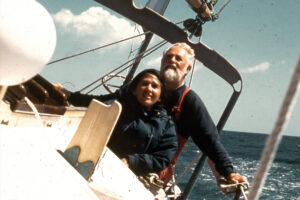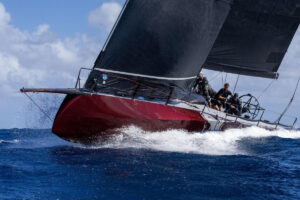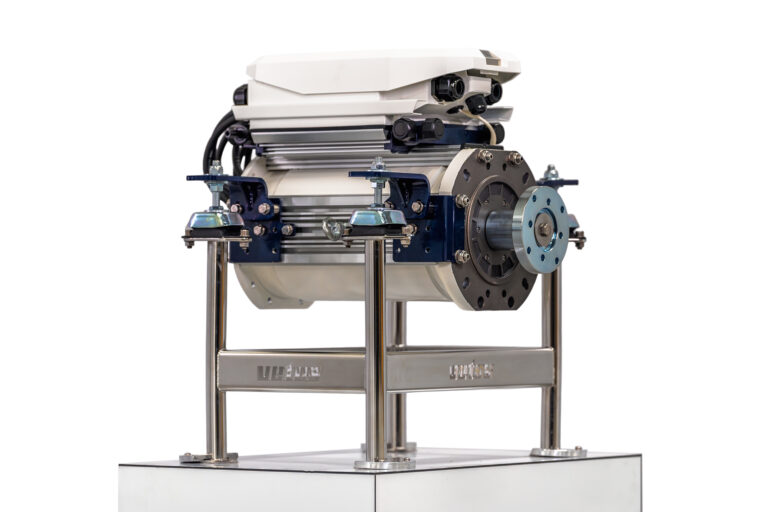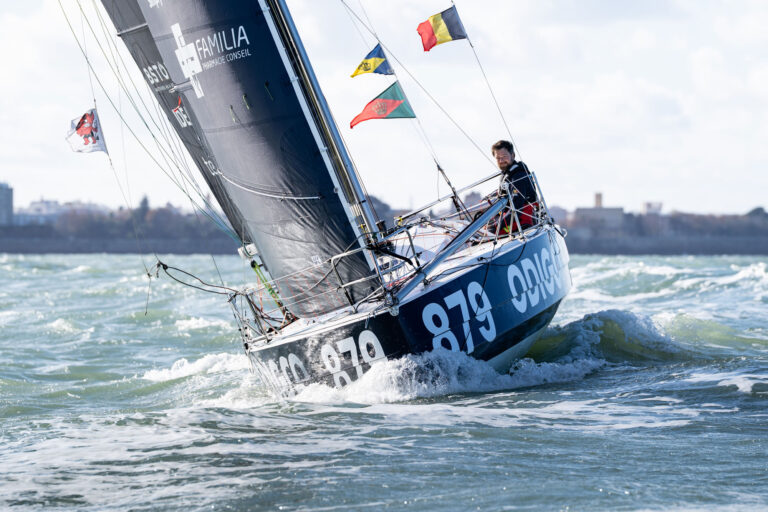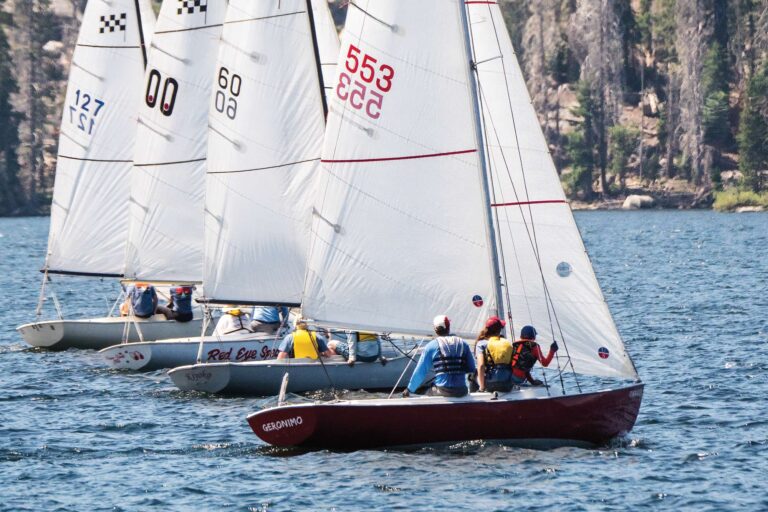
trim cat 368
I’m pretty sure it wasn’t my shoe collection that forced our waterline to become, well, an underwaterline. But it was my shoes that made my husband, Evan Gatehouse, insist that our boat needed to go on a diet. We’d been outfitting Ceilydh, our Woods-designed 40-foot catamaran, for offshore cruising. The boat’s waterline, which had seemed more than generous when we’d first painted it, was pretty much a dim memory by the time I started bringing clothes aboard.
I know that the one thing that plagues cruising boats more than any other condition is obesity. Wander about in any harbor and you’ll see that overweight yachts abound. But paring down our stuff to the essentials was tougher than I expected. After all, how exactly do you define “essential”?
The time is long past when sailors were content to head offshore on basic boats with bare-bones accommodation. These days, most of us want refrigeration, radar, roller furling, computers, and shoes for a variety of occasions. And as we outfit our boats with more and more of the comforts of home, our stout hulls have settled more deeply into the water.
Why Jettison the Extras?
Pretty much the same mantra that applies to people works for boats, too: Lose weight, feel great. Boats are designed to carry a specific amount of payload, and when all the stuff that boat owners bring aboard tips the scale and exceeds the design displacement, a boat will sink below the intended waterline. When a boat’s overweight, it’s not just a matter of looking a little beamy and low on the lines. Increased displacement leads to slower sailing, which can lead to more (and slower) motoring, which leads to higher fuel costs.
For our catamaran, the percentage of speed loss is inversely proportional to the percentage of weight gain. Our boat weighs 10,000 pounds, and we’ve observed that if we add 1,200 pounds of weight, our speed goes down by about 12 percent. Losing weight certainly helps a boat to become slim, sleek, and swift-remember the way an unladen boat feels on sea trials? And by decreasing fuel consumption, weight loss also helps sailors to save money.
Use It or Lose It
The first step in any good slimming plan is to stop the weight gain. When Evan pointed out that our waterline was long gone but the dock was still piled with boxes of stuff to come aboard, we decided it was time to start culling. Our belief has always been that every item on the boat should have at least two purposes, but as we sorted through a large number of “just in case” duplicates (including a second sewing machine, several extra pots for the galley, and a large box of electrical adapters from long-dead appliances), it was clear that we needed to stop thinking of the boat’s aft lockers as a substitute garage.
Our next step was to go back through every locker and start making personal sacrifices-would we ever use that camping gear or look through those old photo albums? And did I really need seven sun hats? Books turned out to be one of our heaviest onboard items; we’re homeschooling our daughter, so she requires a significant library, and both Evan and I are huge readers. We contemplated getting a Kindle but settled on leaving our best-loved books in storage at home and just bringing aboard books that we’d need for school or to trade when we were finished reading them.
Lighten the Load
Personal sacrifice and careful sorting saw us shed 400 pounds. On our lightweight catamaran, this translated into nearly an inch of reclaimed freeboard. But it was clear that simply unpacking our lockers wasn’t going to be enough to get us back to our former waterline. It was time for a lifestyle change. Making our way through the boat, we looked at everything, from throw pillows to sailing gear, and sought ways to lose weight while still maintaining safety and comfort.
Watermaker: Water is essential, and we like to keep about two weeks’ worth on board. But 1 U.S. gallon of water weighs 8.35 pounds, so our tanks, which can hold about 100 gallons, weigh us down by 835 pounds. By installing a lightweight watermaker, which weighed 50 pounds, and only keeping our tanks half full-we’ll top them up for long passages or before entering harbor-we were able to save close to 400 pounds.
Anchor: Ground tackle is, by nature, heavy stuff. We cut back the pounds here by choosing a 33-pound aluminum Spade anchor over the 66-pound steel version. By using a mixed anchor rode of 150 feet of high-tensile 5/16-inch chain plus 150 feet of 5/8-inch plaited nylon instead of a 3/8-inch BBB all-chain rode, we saved an additional 317 pounds. Learning to set the lightweight gear took a couple of practice runs, but now it holds the boat as well as its heavier counterpart.
Tools and spares: We try to be mechanically self-sufficient and tend to have every imaginable spare or tool on hand, so it was hard to reduce our tool weight. Evan suggested that we replace his steel hand tools with titanium ones, but the cost-to-weight savings ratio on that scheme was a bit excessive. We did get rid of a few things that we used in outfitting-a router, a pressure washer, a large shop vac, and a handful of duplicate wrenches and screwdrivers-to save 30 pounds. Evan also sorted through all his rigging bits, and he offloaded 11 pounds of random stainless-steel fittings.
Propane tanks: We use propane for both our stove and our barbecue and carried two 20-pound tanks and one 10-pound tank. When our steel tanks needed replacing-they seem to rust pretty quickly on a boat-we decided to try the fiberglass Lite Cylinders. Not only did we save 23 pounds in total, but also the new tanks are see-through, so we know when we’re getting low on propane, and they don’t rust.
Lifelines: When it came time to replace our old stainless-steel lifelines, we saw this as a good opportunity to shed a few pounds by switching from stainless steel to Spectra. With the high-tech lines, we lost about 12 pounds in weight, including fittings. The Spectra is also easy to inspect and more comfy to lean against.
Fenders: We carried a random assortment of old Polyform fenders on board, but when I saw my first Aere fender, made by Praktek, which is not only much lighter but deflates for storage, I was sold. Replacing the entire mix-and-match set saved us 16 pounds and freed up much locker space. The new fenders might not be my choice if we spent all our time at a dock, but for the occasional use that they get, they’re more than sturdy enough to prevent damage.
Pillows: I like throw pillows. They cheer the place up and can transform the settee from a dining area to a sofa and back again. While they don’t weigh that much, by getting rid of the forms and stuffing the covers with our spare blankets and sleeping bags, we saved 6 pounds and cleared out one locker.
Keeping Trim
By the time we were done emptying lockers and replacing old gear with lightweight alternatives, we were down about 1,200 pounds and up almost 2 inches. But all those newly emptied lockers placed temptation in our way. Within a few months, our weight was starting to creep back up. There was the “just in case” pieces of fiberglass tubing, a windsurfing board that was practically free and that one of us might want to learn to use, and the boxes of books given to us by thoughtful friends.
Like all diets, it seems boat weight loss can be subject to rebound gains.
So we’re on a maintenance diet. We pay attention to what we stuff in our lockers and try to catch ourselves before the weight creeps back up. We now know that while that individual 10-pound indulgence doesn’t seem like it will tip the scale, it won’t take that long for our waterline to disappear again.
Diane Selkirk hopes a season in Mexico won’t add too much extra ballast to Ceilydh before a planned 2011 Pacific Ocean crossing. Read about the crew’s travels at their website (www.maiaaboard.blogspot.com).

